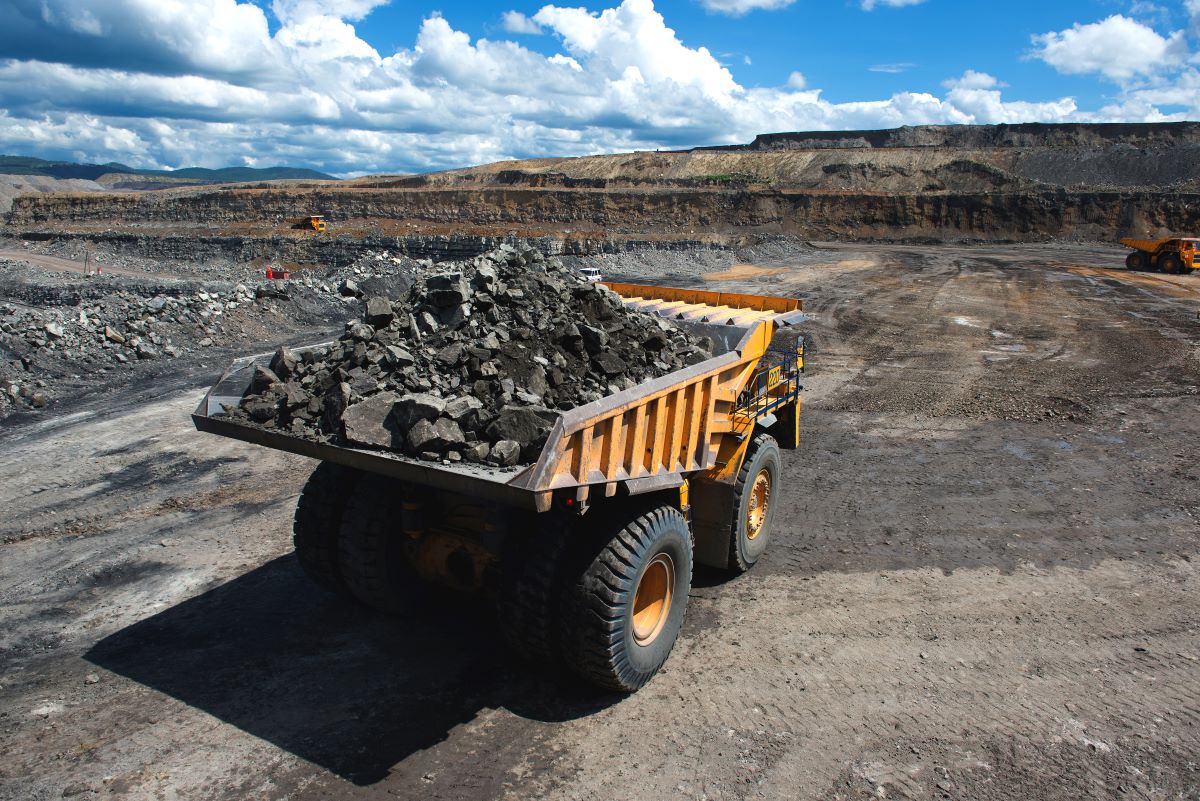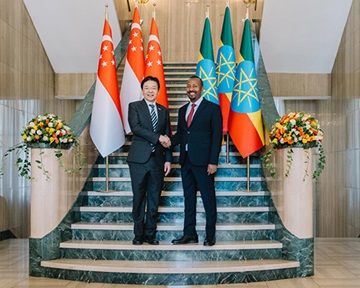Trade in African metal and minerals gathers momentum
Commodity traders look to Africa as sanctions hit Russian exports
 Russia’s invasion of Ukraine has raised several important geo-political questions, not least of which is how mineral-rich Africa could benefit or be disadvantaged by the conflict. Since the invasion began on 24 February, the prices of a number of key industrial metals and phosphates have hit historic highs. These prices have informed boardroom conversations across Africa, as miners have looked for ways to benefit from them.
Russia’s invasion of Ukraine has raised several important geo-political questions, not least of which is how mineral-rich Africa could benefit or be disadvantaged by the conflict. Since the invasion began on 24 February, the prices of a number of key industrial metals and phosphates have hit historic highs. These prices have informed boardroom conversations across Africa, as miners have looked for ways to benefit from them.
Russia is the world’s second-biggest producer of platinum, after South Africa. In 2021, on figures from the United States Geological Survey (USGS), South Africa produced 130 tonnes of the precious metal, and Russia 19 tonnes. The third biggest producer is Zimbabwe, with 15 tonnes in the year. The main industrial application for platinum is in catalytic converters on car exhaust systems. A modern converter contains anywhere from 3 to 7 grammes of platinum or a substitute – meaning that Toyota, the world’s leading carmaker, with production of 10.5 million units in 2021 (including Daihatsu and Hino), required at least 28 tonnes of such a metal. One such substitute is palladium – the other major metal in the platinum group of metals. The USGS estimates that South Africa mined 80 tonnes of palladium in 2021, not far ahead of Russia, which mined 74 tonnes.
In theory, South African miners are thus well positioned to take advantage of the disruptions to supply of Russia-mined platinum group metals. But Impala Platinum, the world’s third largest producer of platinum group metals, said in March that it had limited capacity to boost production at its South African mines to sell into the supply deficit.
To take advantage of the opportunity, firms like Impala may look to South Africa’s northern neighbour: Zimbabwe. In late February it was reported that Impala had been approached in connection with a joint venture proposal with a Zimbabwean company called Great Dyke to launch mining of that company’s Darwendale asset, but Impala has reservations about the fact that Kuvimba, a government-controlled vehicle that owns 50% of Great Dyke, will not reveal the identities of the private shareholders who own 35% of its equity. (The other 50% belongs to Vi Holding, controlled by Russian tycoon Vitaliy Machitskiy – an added complication in the current climate).
Early March saw dramatic rallies in the prices of zinc, too. The zinc price exceeded US$4,000 a tonne – its highest since 2007. The Ghazaouet mine in Algeria is the biggest single zinc mine in the world, with output of 870,000 tonnes in 2021 – more than the total output of the United States. In the week that zinc hit its multi-year high, Terramin of Australia announced that it had obtained a decision to mine the nearby Tala Hamza zinc deposit, after ceding 16% of its interest to local joint venture partners. As Terramin’s Executive Officer Martin Janes said: “It is a very opportune time to progress Tala Hamza towards being a world-class long-life zinc producer”.
Nickel has moved more dramatically than other metals, because Russia has the world’s biggest nickel reserves, and the metal is used in steel as well as in batteries. The London Metal Exchange suspended trading in nickel on 08 March after the price shot from US$25,000 a tonne to over US$100,000 a tonne. Trading resumed on 16 March, and the market set the price just under US$50,000.
In response to these developments, Nkomati Nickel in South Africa announced that it was considering reopening a mothballed mine, as current price levels again make profitable operations feasible. Nkomati Nickel may be disadvantaged if it tries to sell to G7 companies by the fact that 50% of the company belongs to Russia’s Norilsk Nickel (the other 50% is owned by African Rainbow Minerals). Norilsk used to also own nickel assets in Botswana, but then became involved in an acrimonious dispute with the Botswanan government that was resolved (by means of a cash settlement) in November 2021. In September 2021, the government sold the mothballed mines to Premium Nickel Resources of Canada, and that company’s stated intention to reopen them will have received fresh impetus from this month’s price movements.
Phosphate markets have reacted to the war with the same kind of panic as metals markets, and to the ensuing recommendation by Russia’s trade and industry ministry on 04 March that fertiliser producers suspend exports. In 2021 Russia produced 13% of the world’s total production of fertilisers containing potash, phosphate and nitrogen, exporting these products mainly to Asia and South America.
Disruptions to the supply of fertilisers are to the advantage of Morocco – its state-owned Cherifian Phosphates Office (OCP) is the world’s biggest producer of fertiliser inputs. And, unlike second-placed producer China, where the near-totality of production is consumed domestically, almost all Morocco’s production is exported. In light of the looming fertiliser price squeeze, which threatens to exacerbate inflationary pressures, a group of US congresspeople wrote to the International Trade Commission in March to suspend a 20% import tariff imposed in 2020 on imports of Moroccan phosphate, arguing that the OCP benefited from unfair subsidies.
The outlook for commodity prices is highly uncertain, as traders watch the news from Ukraine to evaluate the likelihood of a peace treaty. The platinum price, for instance, fell 17% in the day’s trading on 14 March, as diplomatic channels were opened. If turmoil persists, and raw materials supplies from Europe remain uncertain, Africa’s miners may see the boom times last for a while.
References
‘Top 5 Palladium- and Platinum-producing Countries (Updated 2022)’, Investing News, 14 March 2022
‘Platinum Group Metals in Catalytic Converters’, Matmatch, 08 October 2019
‘Impala stalls Zimbabwe platinum approach over ownership concern’, Bloomberg via Mining Weekly, 28 February 2022
‘Metals Extend Scorching Rally With Zinc Topping $4,000’, Bloomberg News, 03 March 2022
‘Peru's Antamina set to become 4th biggest global copper player’, Bnamericas, 06 October 2022
‘Tala Hamza Zinc Project – Development approved by Algerian Partners’, Terramin, 07 March 2022
‘SA mining firms say options limited to export into European supply deficits’, Miningmx, 10 March 2022
‘Nickel plunges 5% and London Metal Exchange halts trading once again as chaos continues’, Business Insider, 16 March 2022
‘Russian invasion of Ukraine: Potential impact on supply chains of mineral commodities’, Mining Technology, 02 March 2022
‘Norilsk Nickel and Botswana: From dispute to dialogue’, Rough Polished, 29 November 2021
‘Russian ministry recommends fertiliser producers halt exports’, Reuters, 04 March 2022
‘Morocco Rock Phosphate Monthly Spot Price: February 2022’, Fertiliser India, 05 March 2022
‘La crise en Ukraine fait l’affaire des producteurs de phosphates et d’engrais africains’, Le360, 07 March 2022
‘Phosphate : des membres du Congrès américain appellent à l'annulation des tarifs douaniers marocains’, L’Opinion, 19 March 2022








